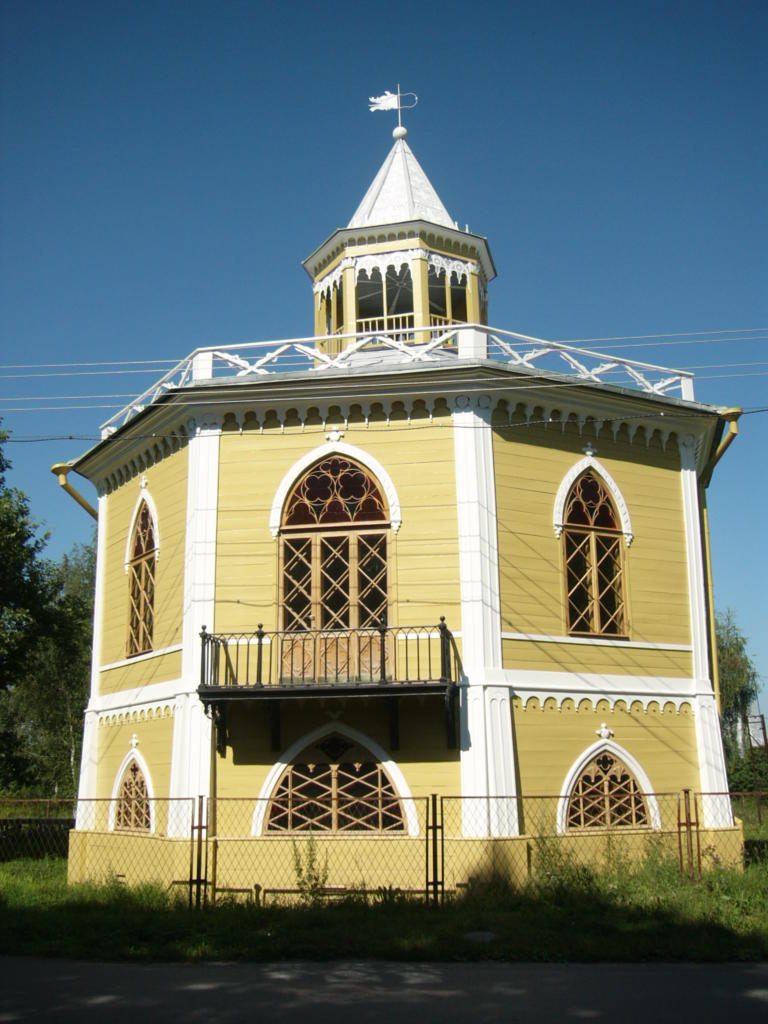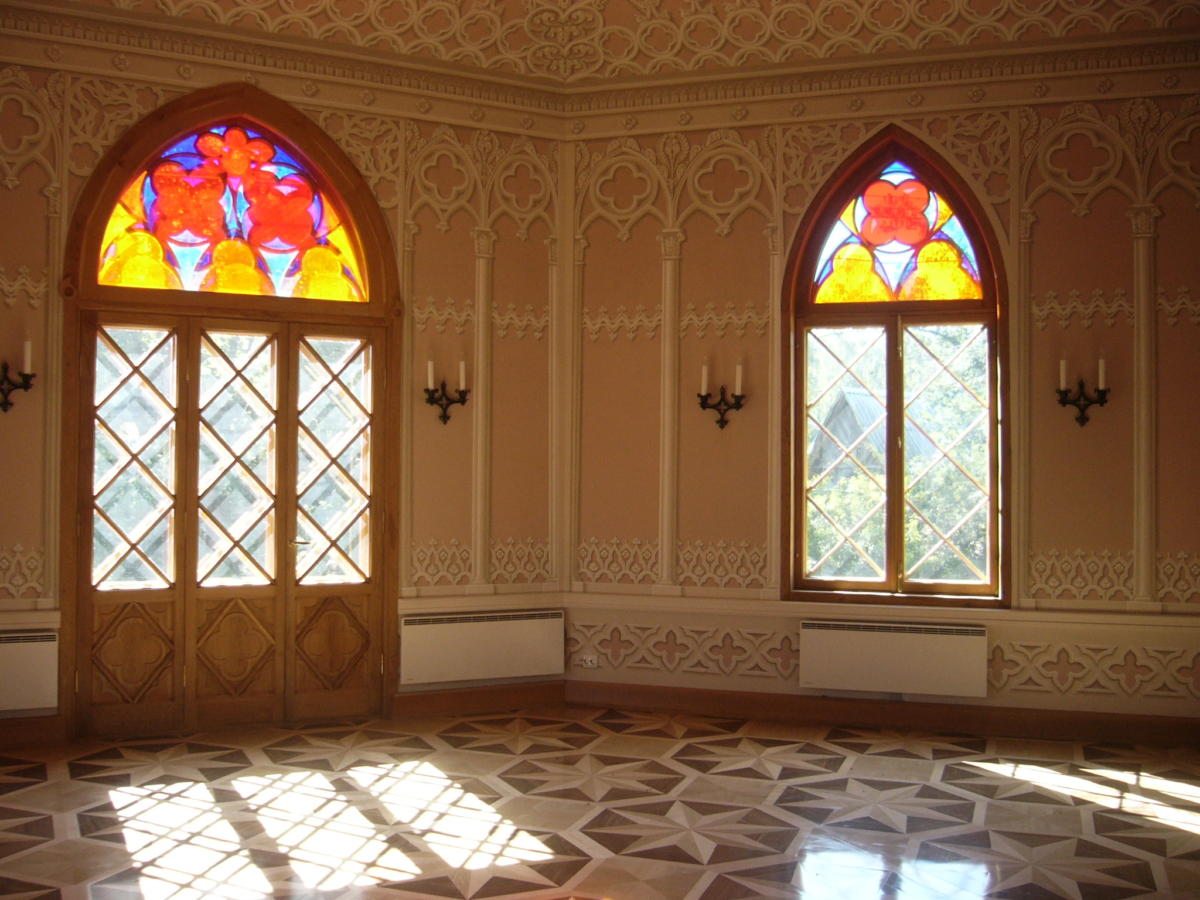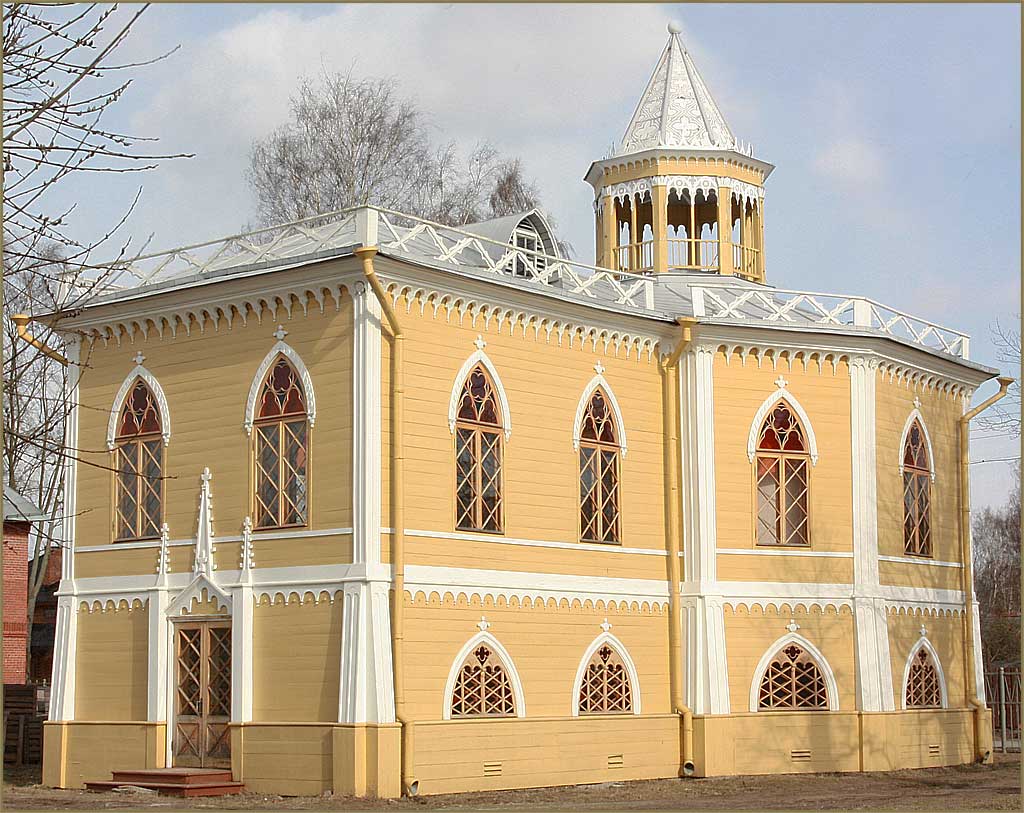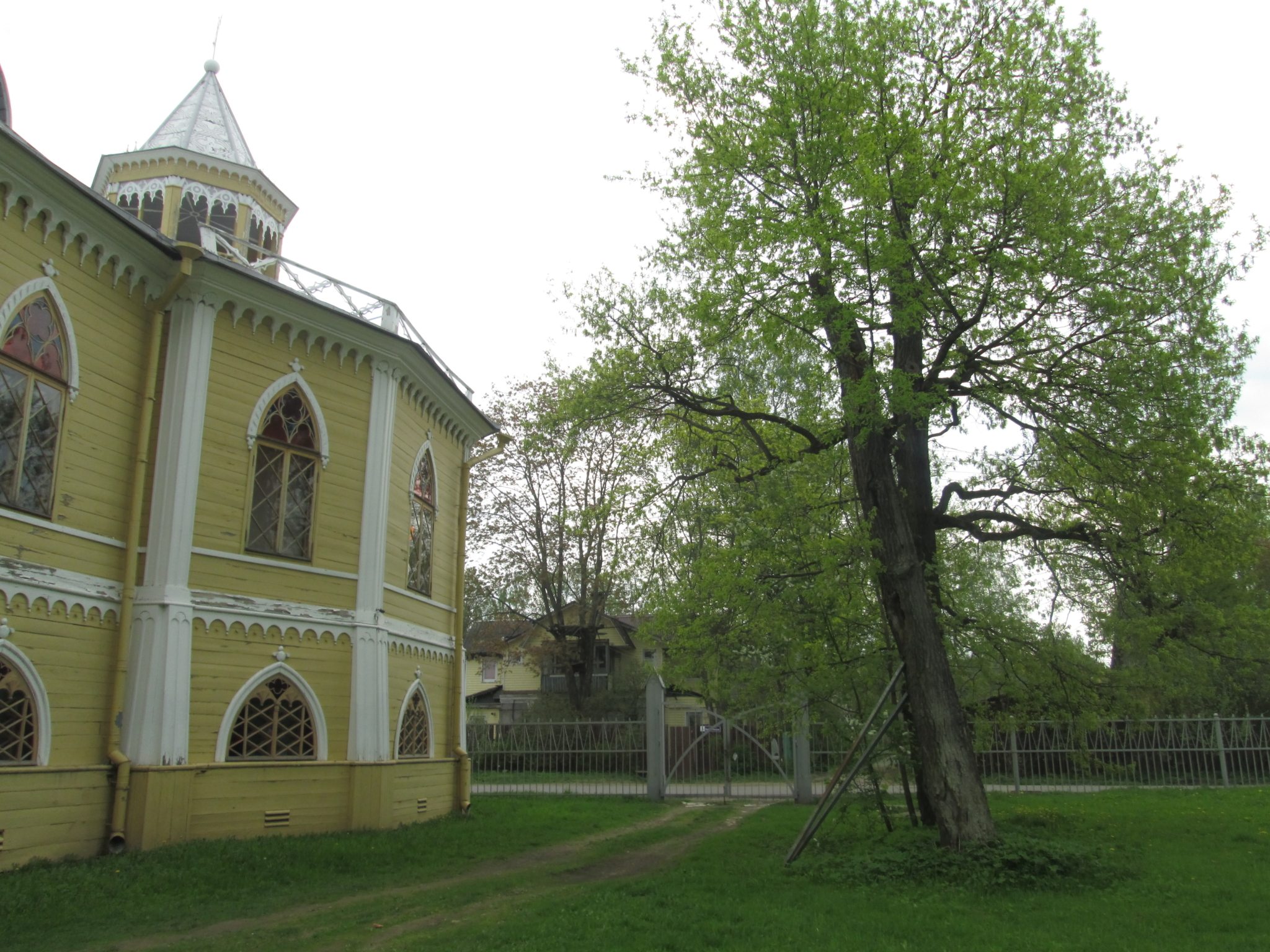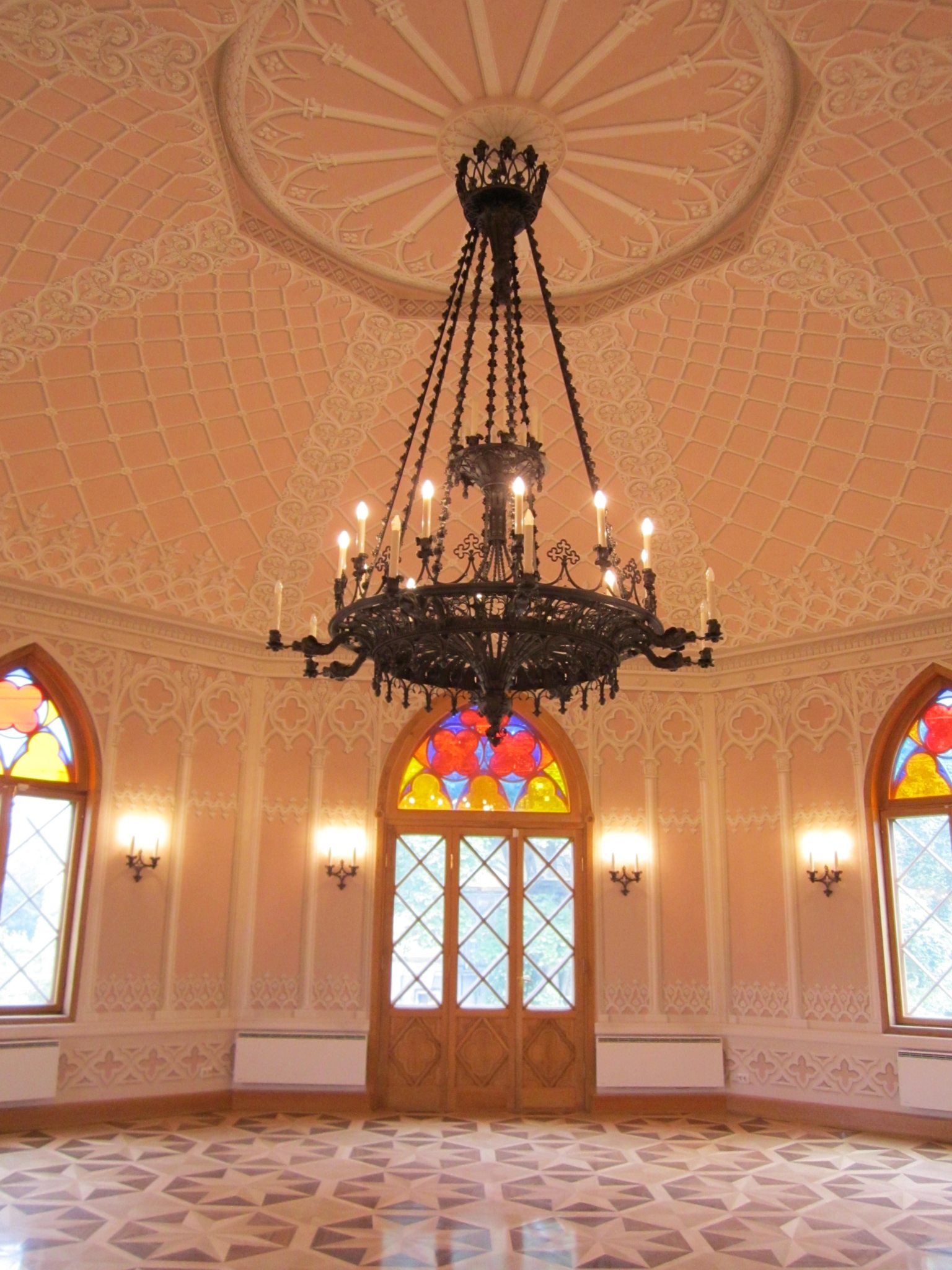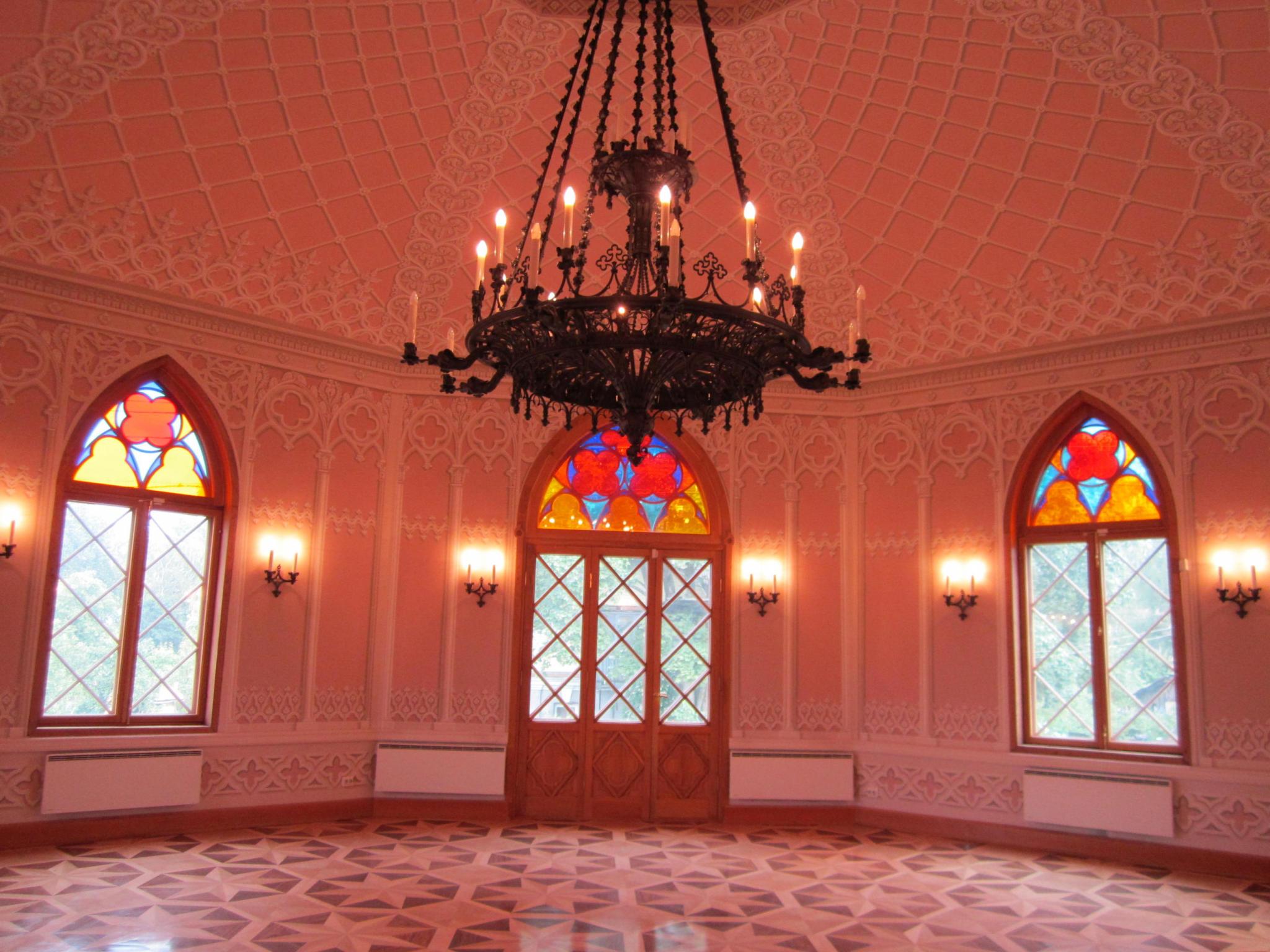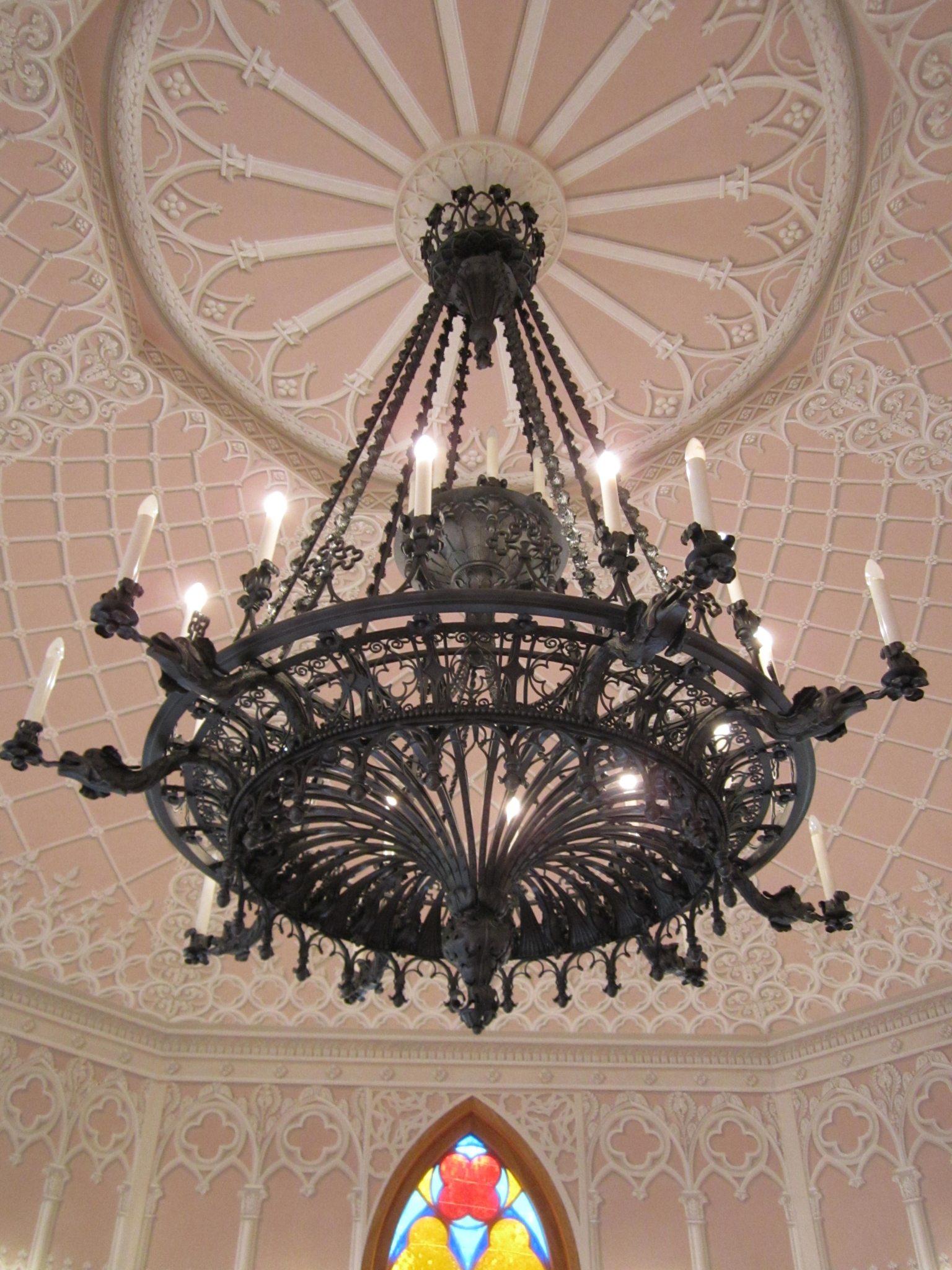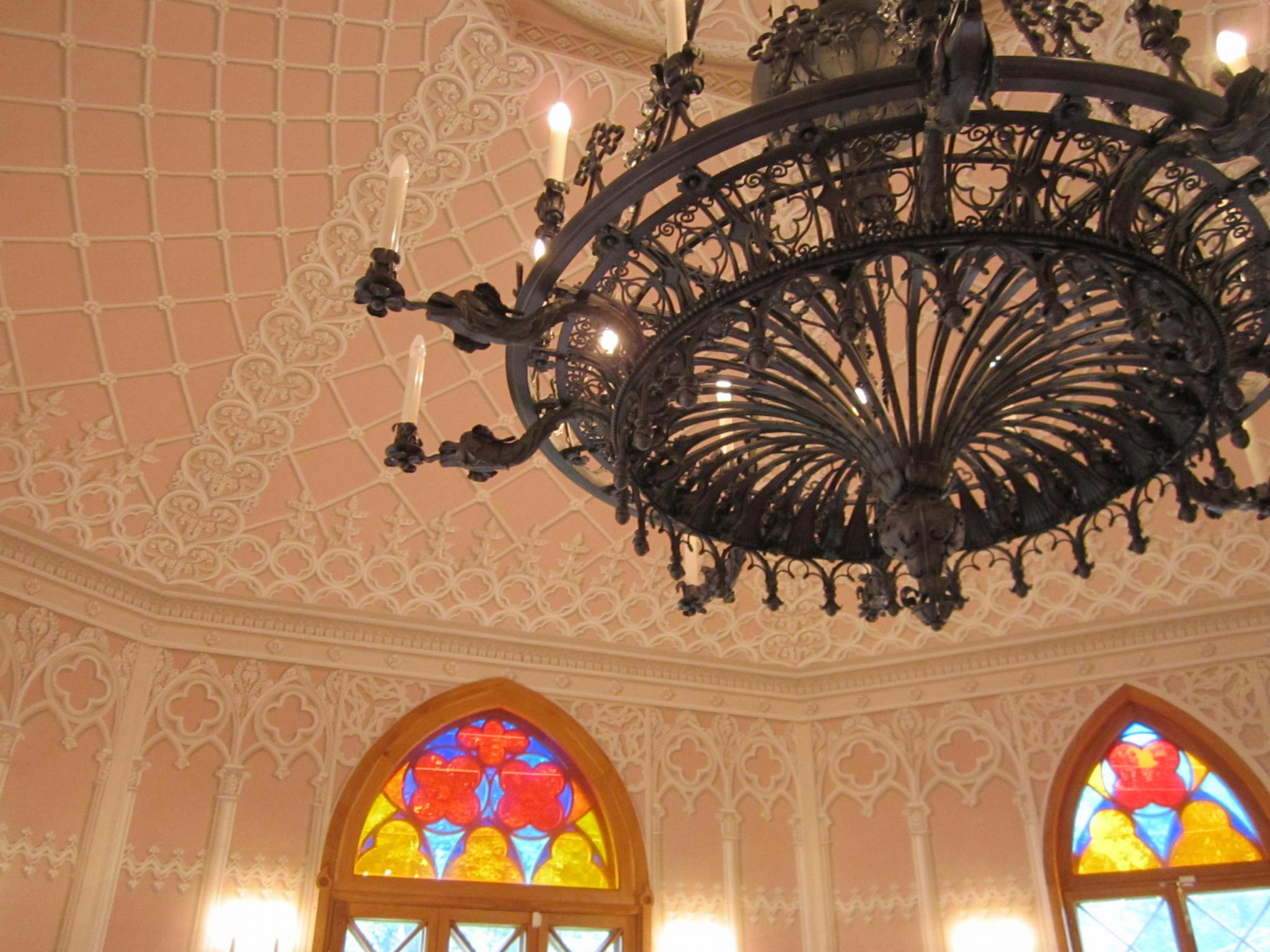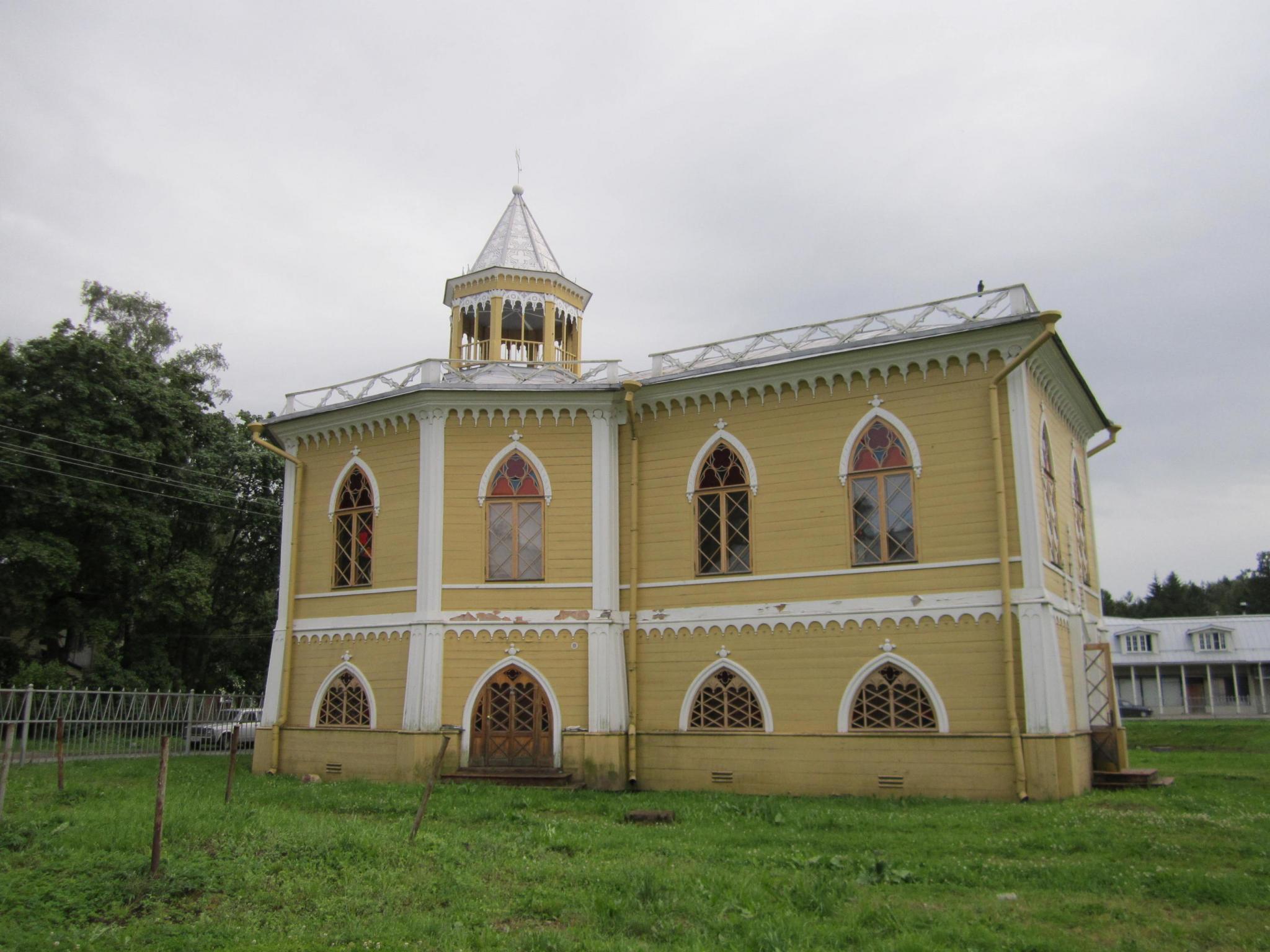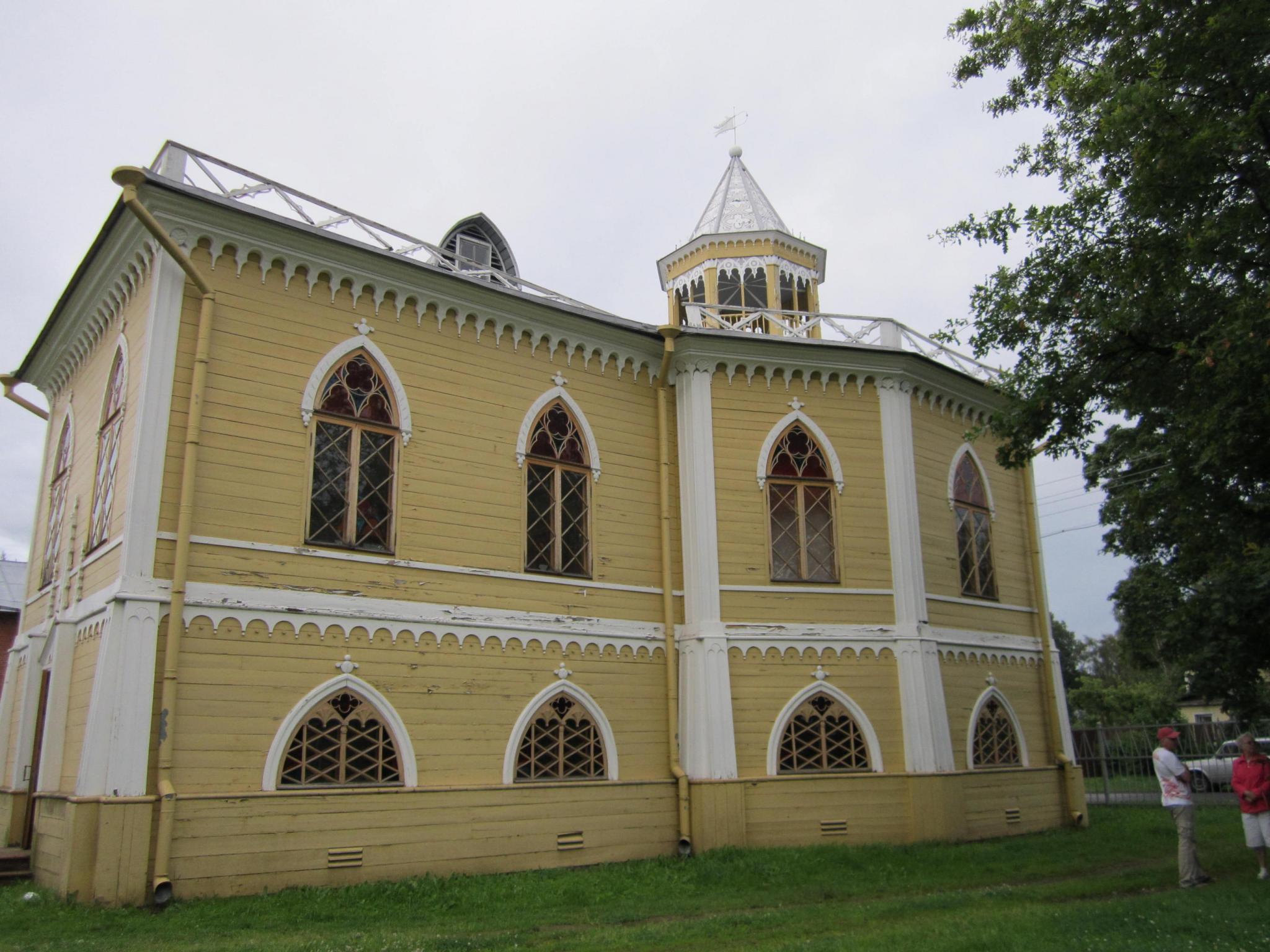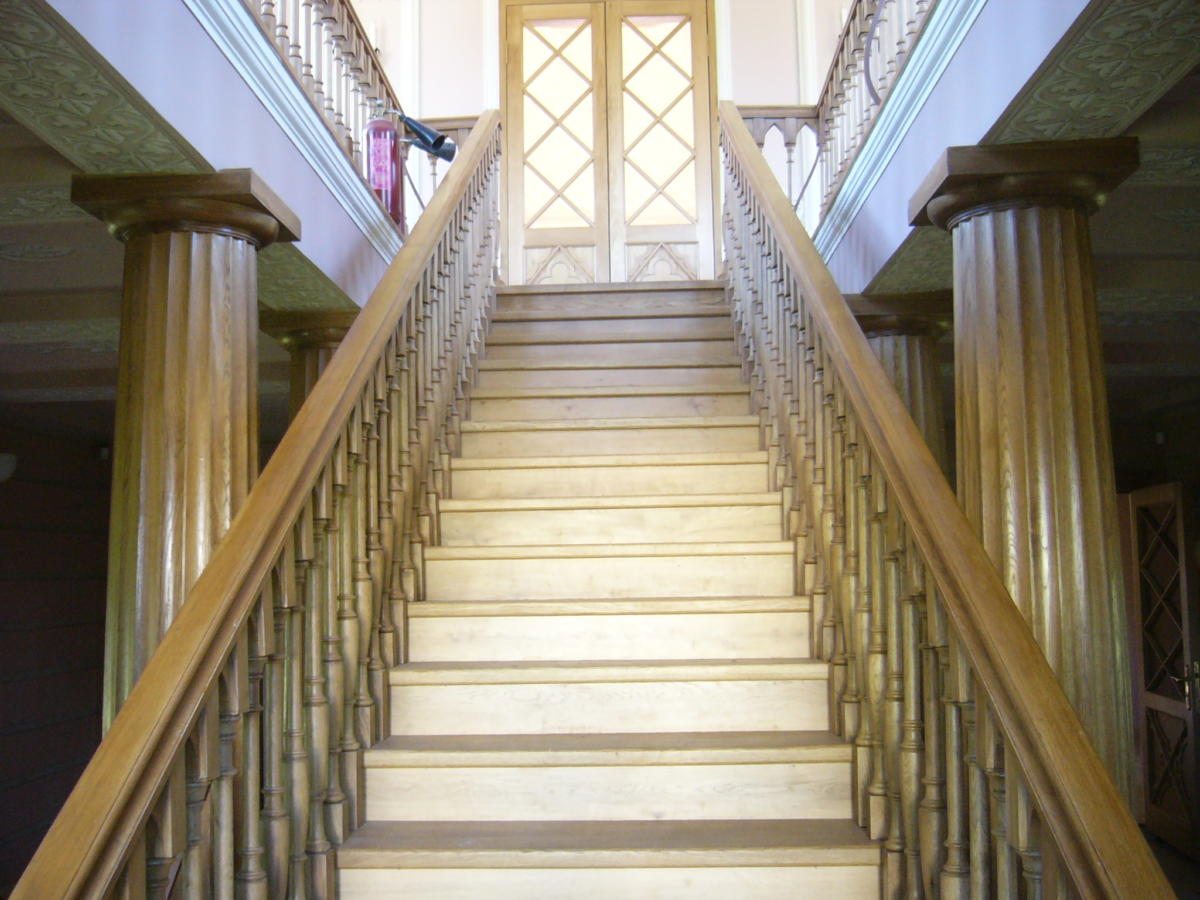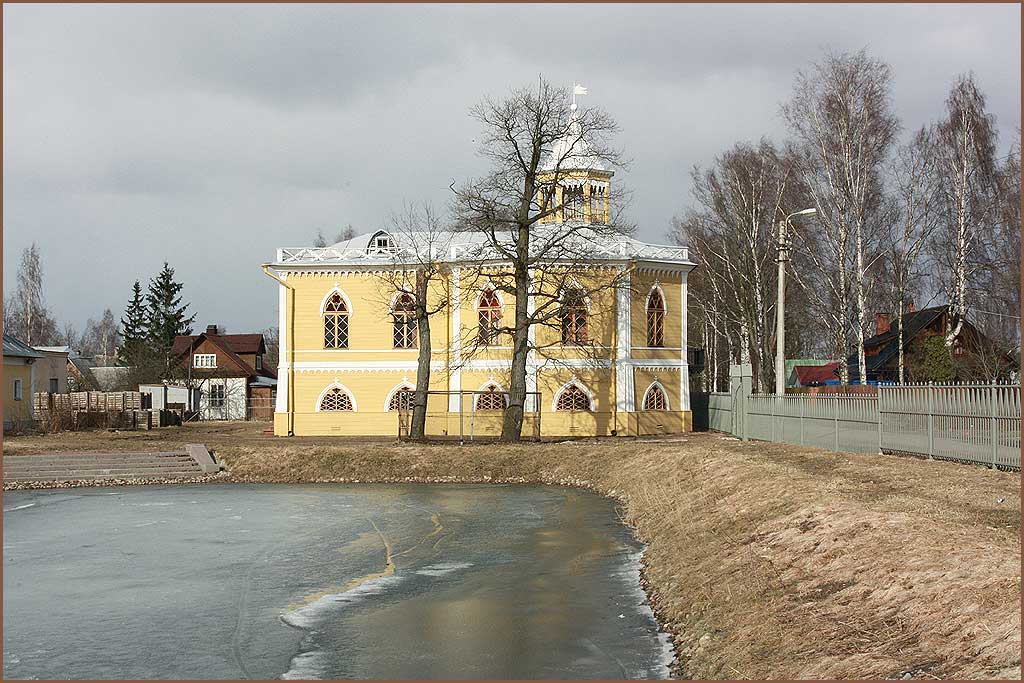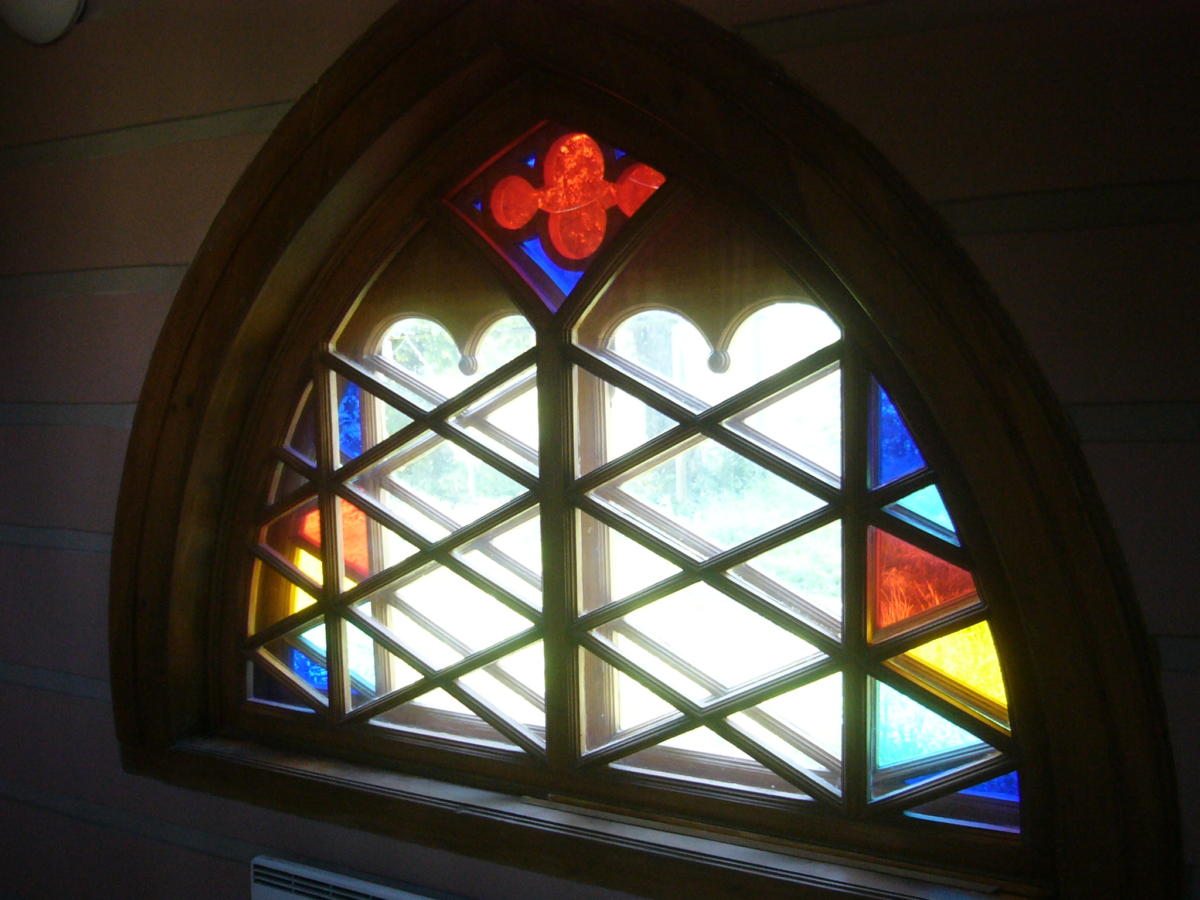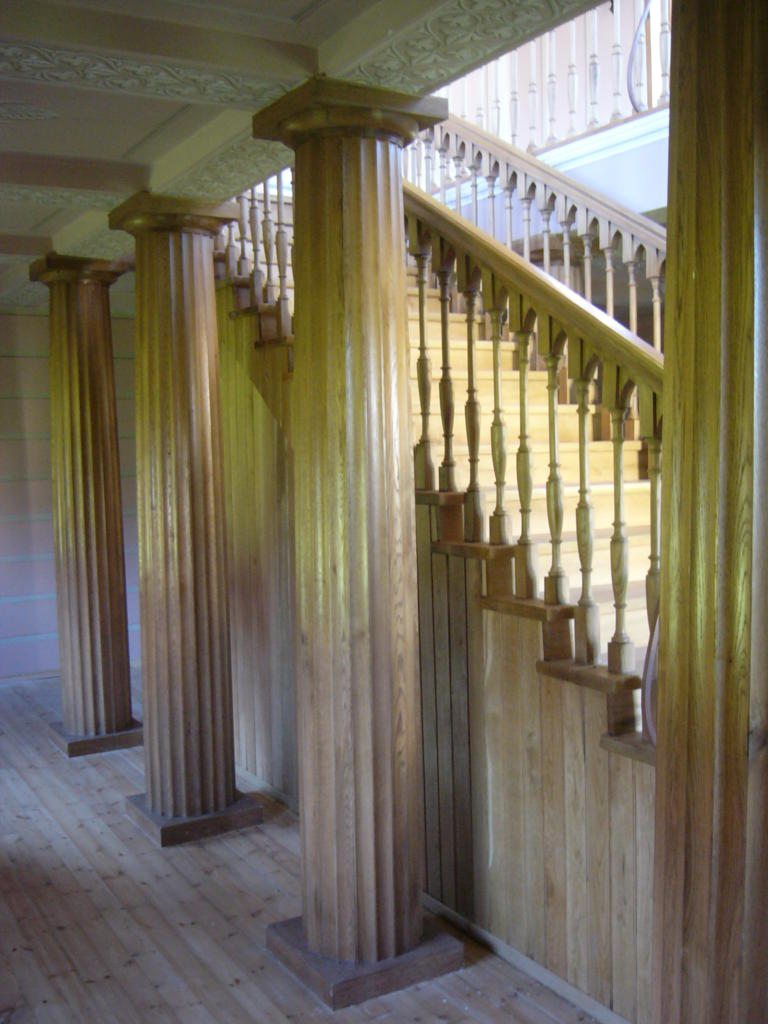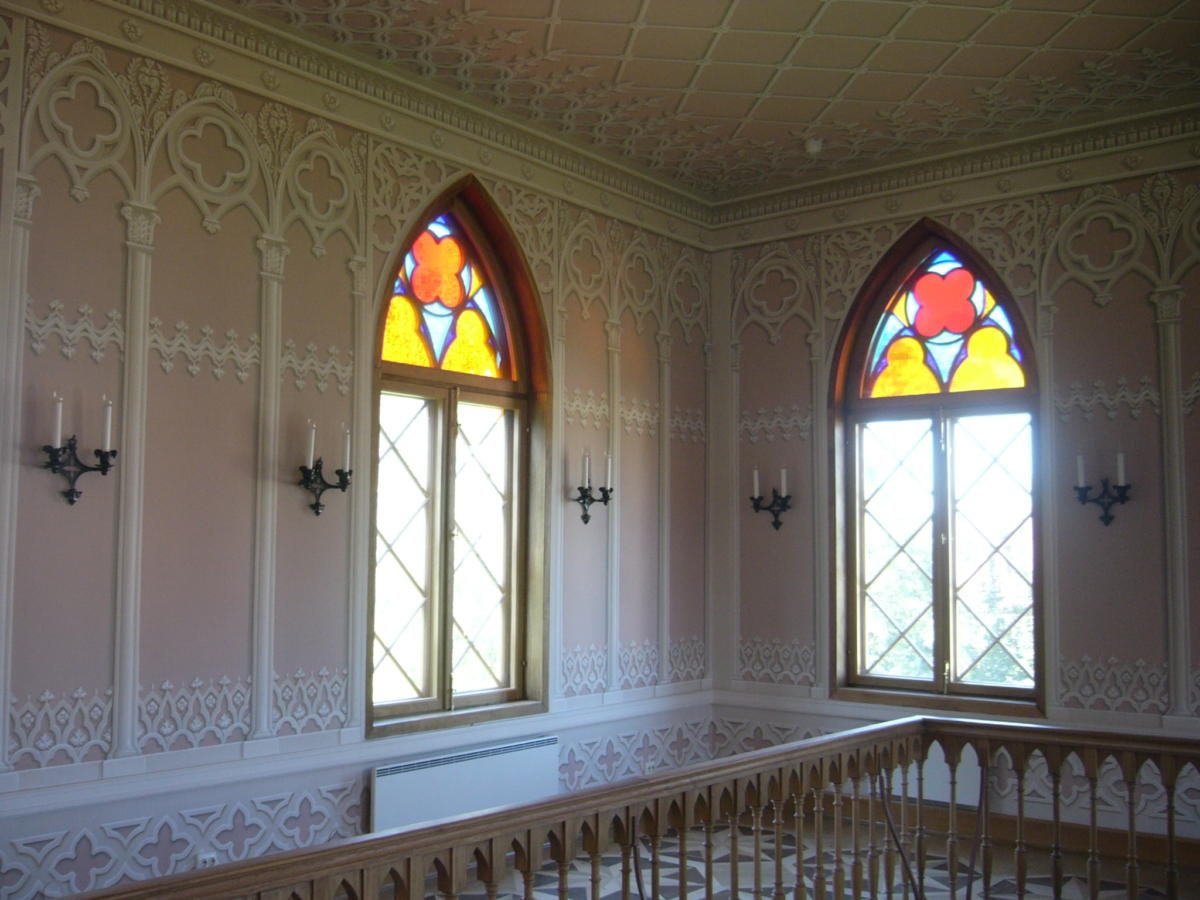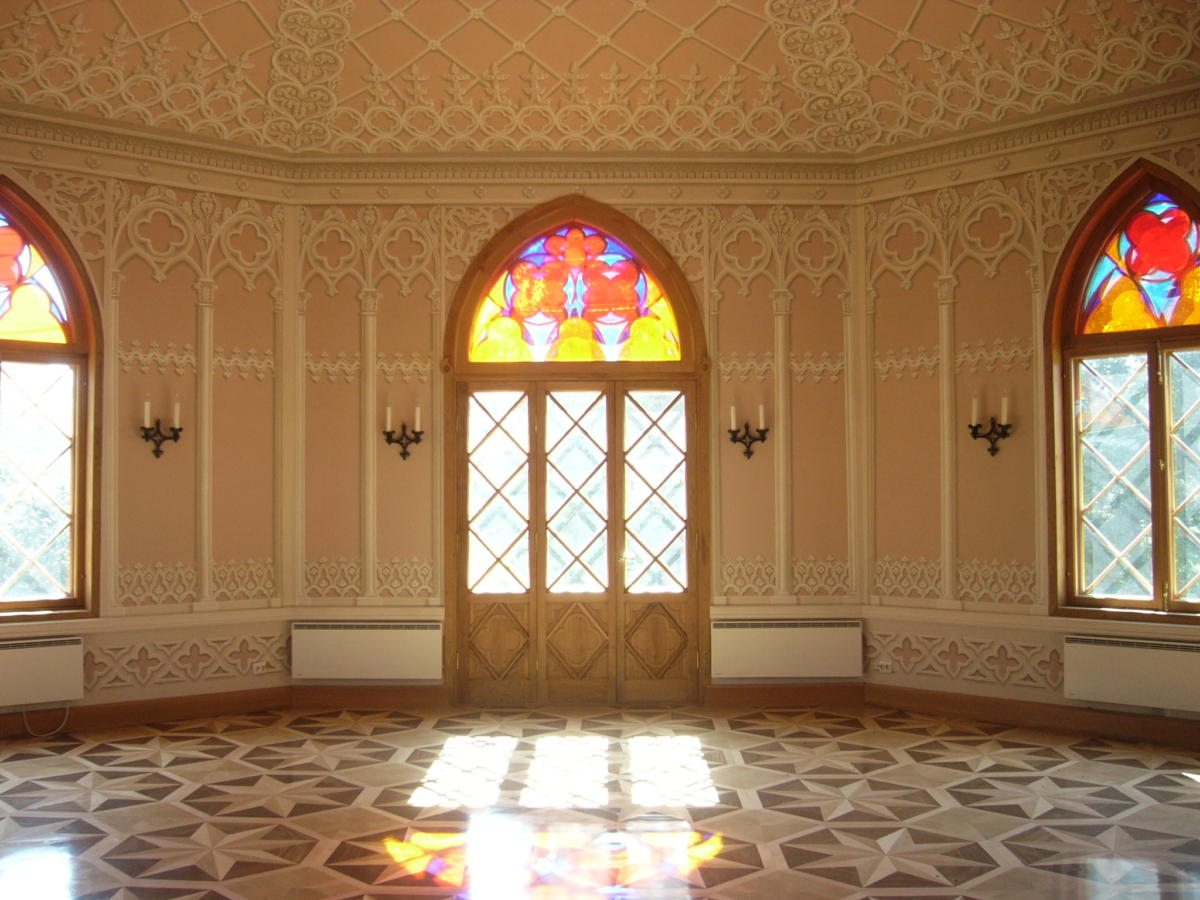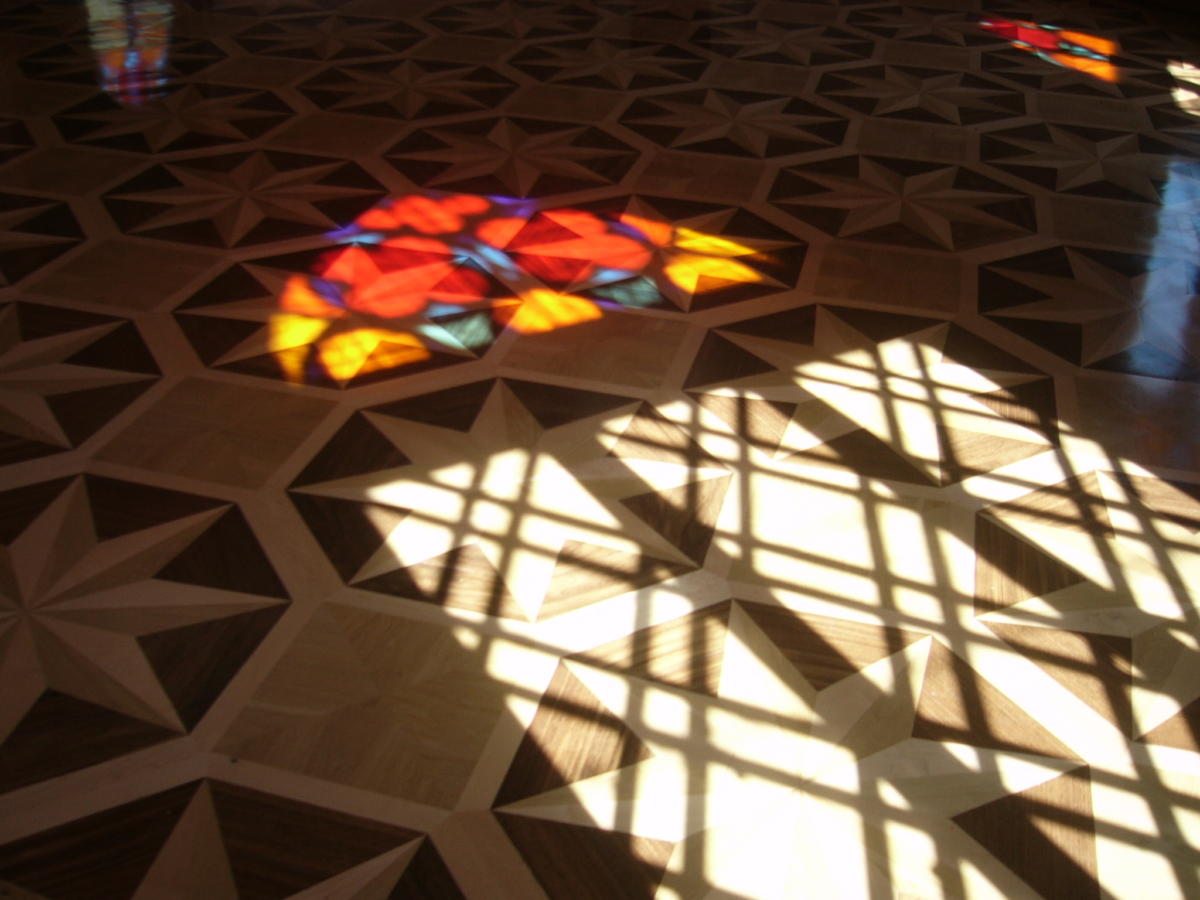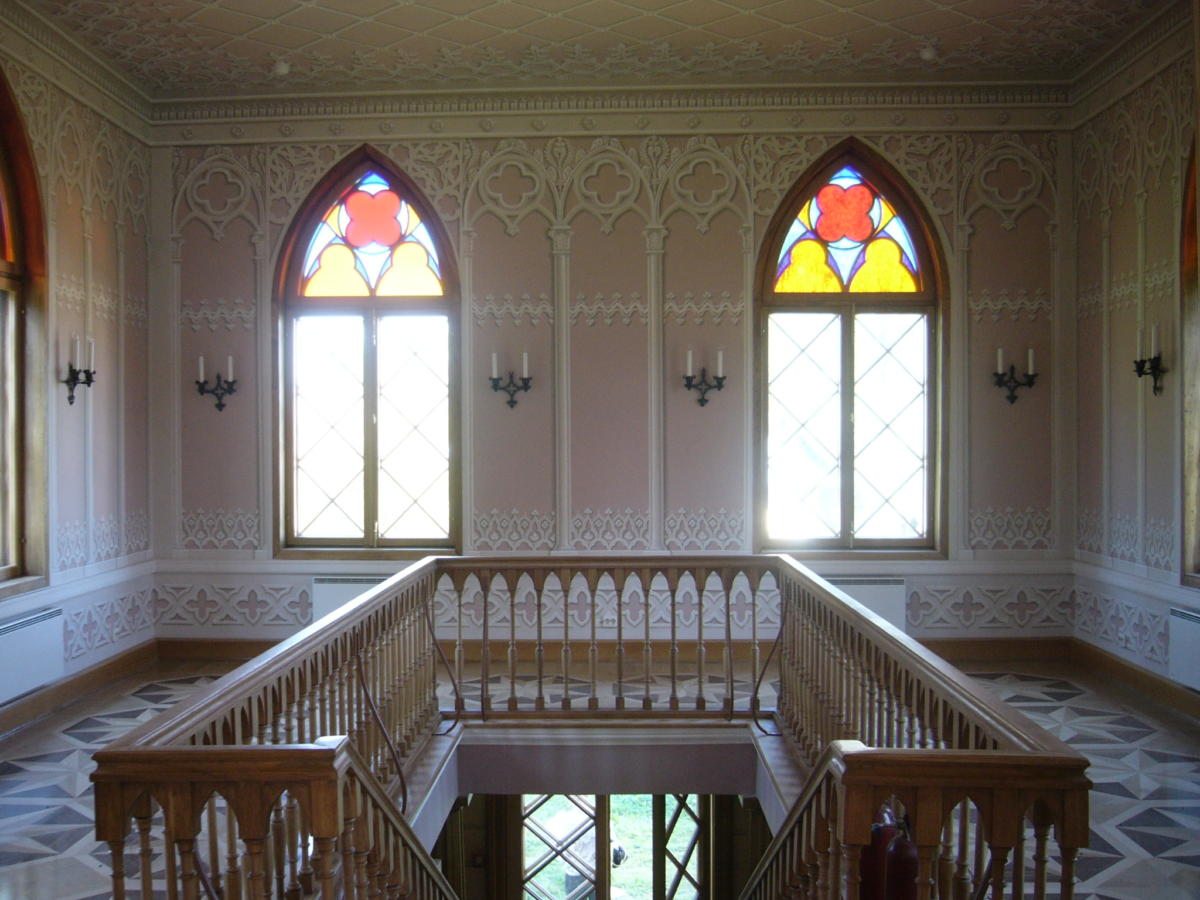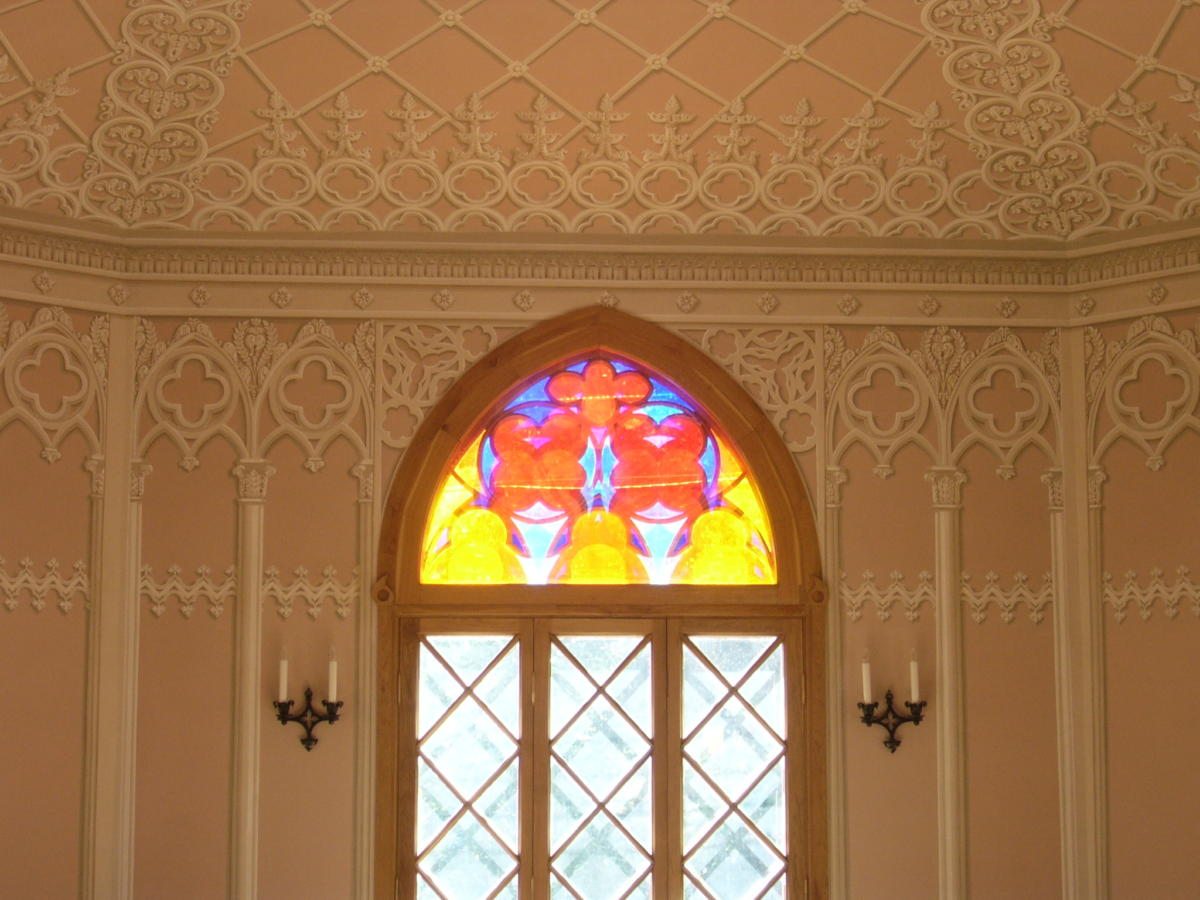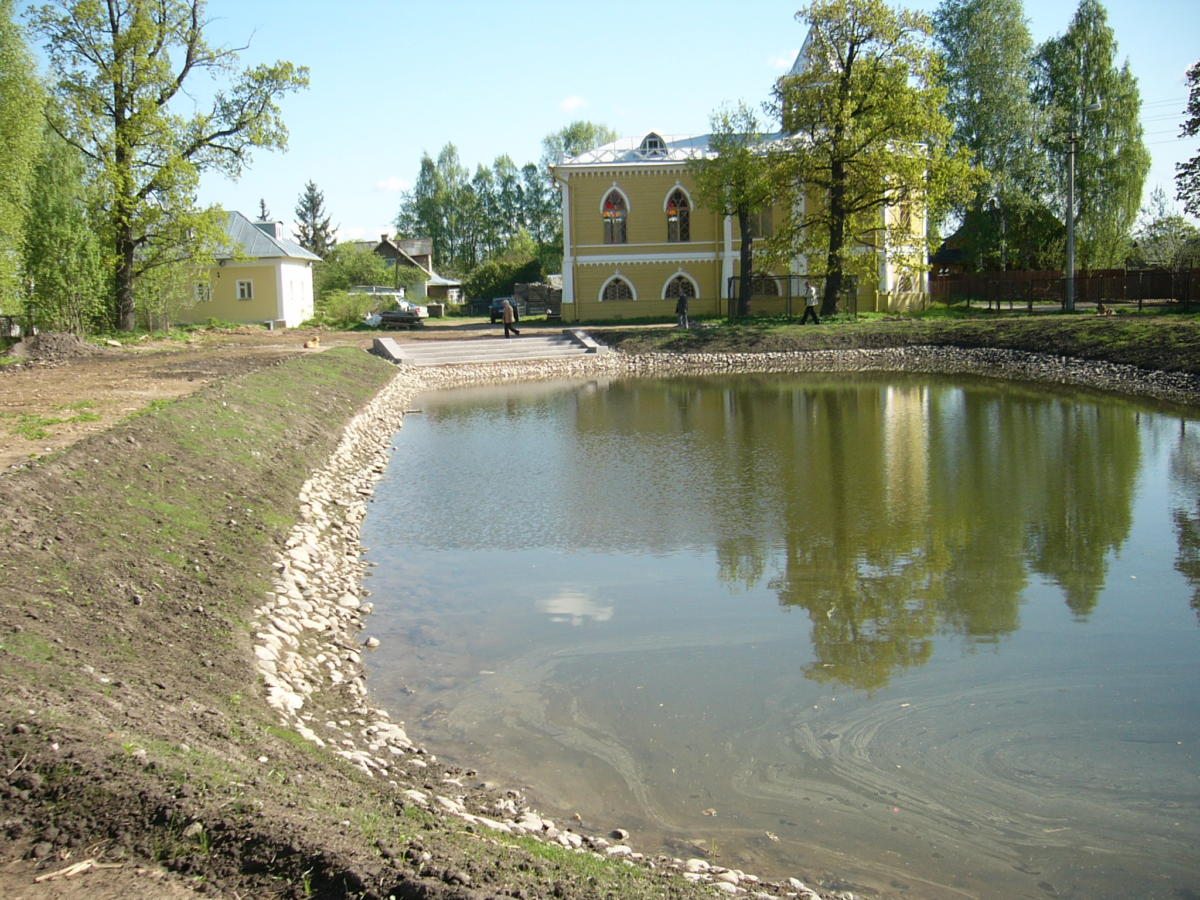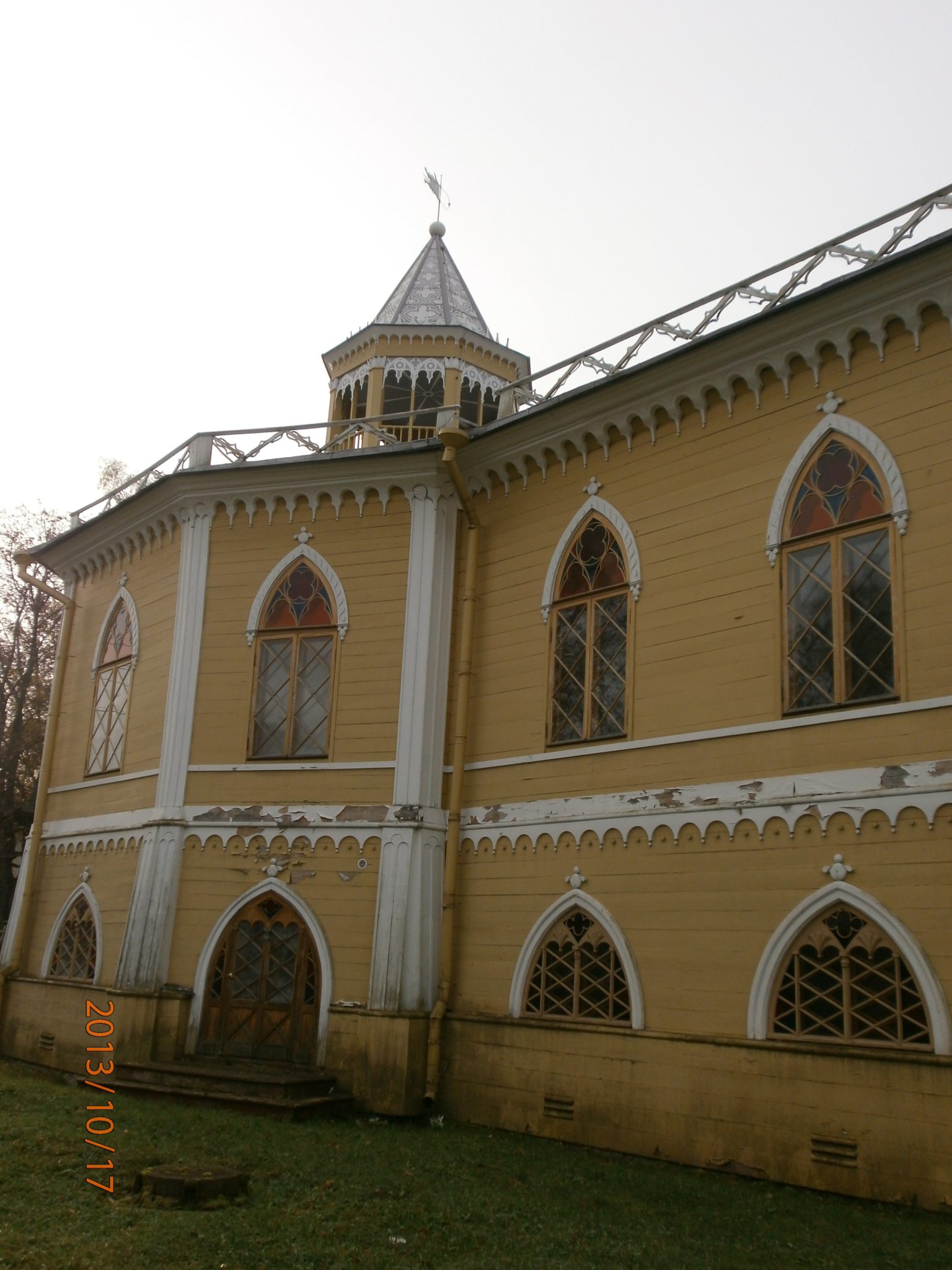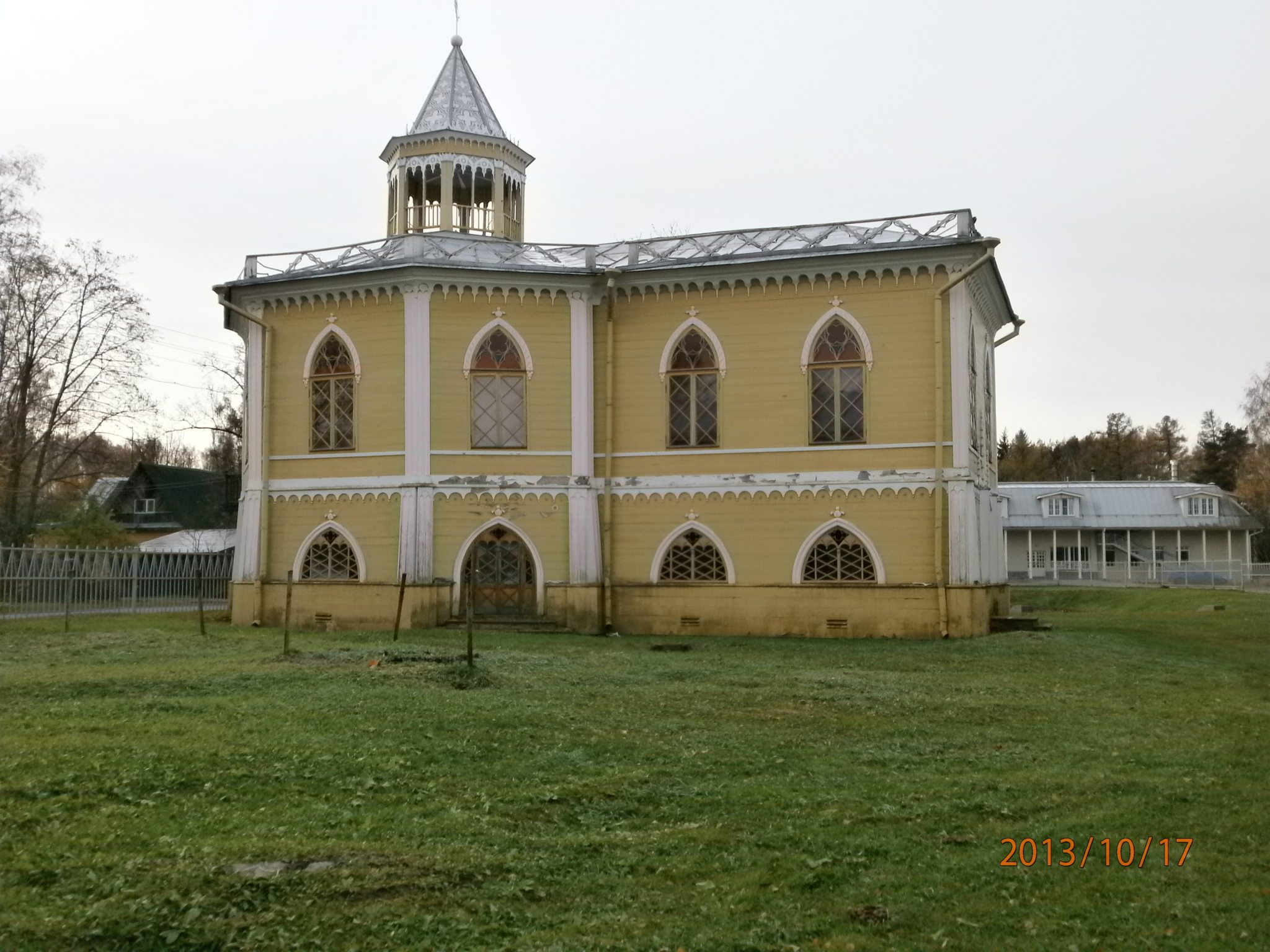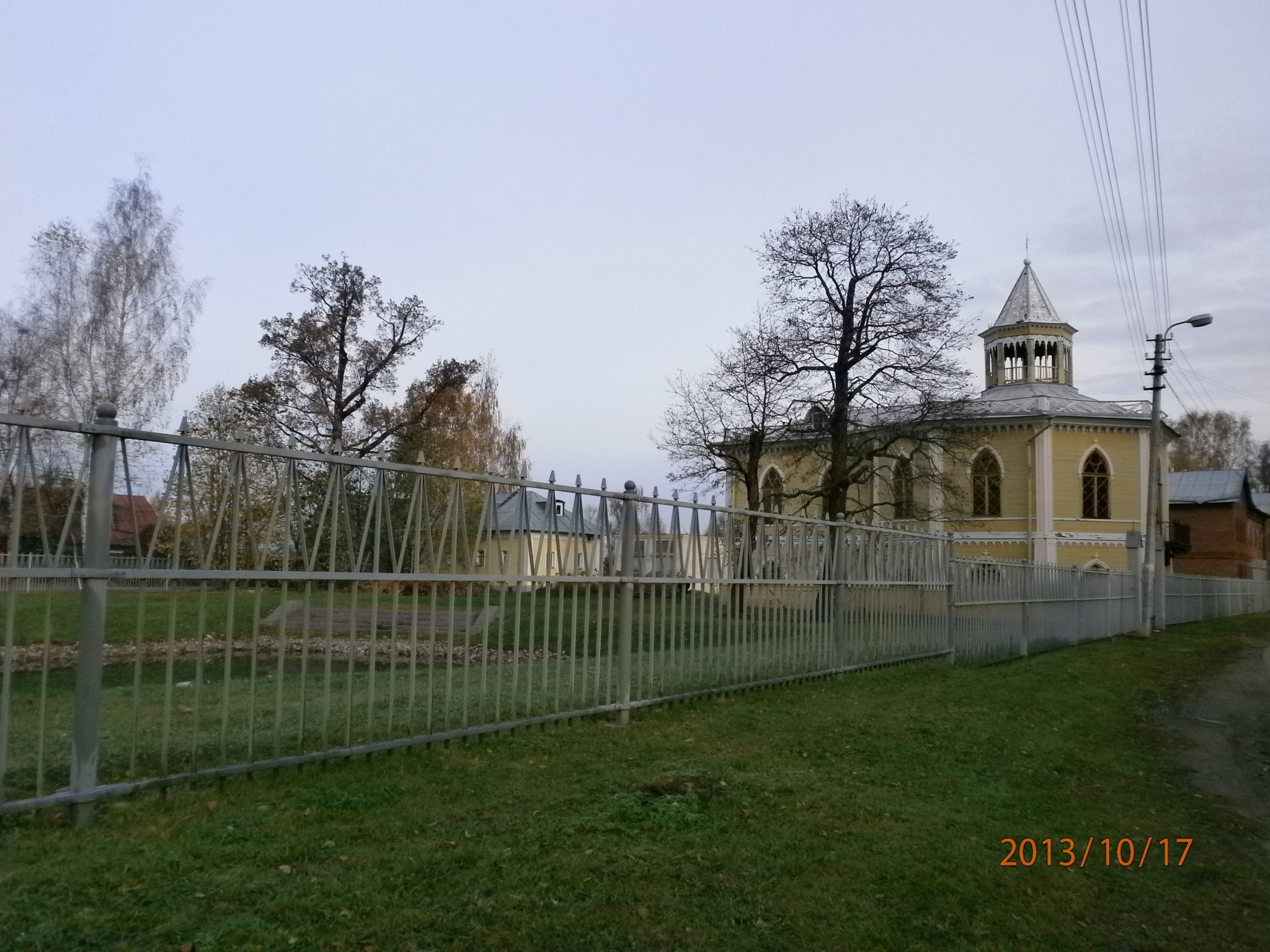Currently, the Farm Pavilion and its grounds are not open for visitors.
History of the Farm Pavilion
The Farm Pavilion was built according to the wishes of Empress Maria Feodorovna in 1802-1803 in the area of former Cantacuzino Dacha. Within three months in summer 1802 the architect Andrei Voronikhin transformed the main building of the dacha to the pavilion and also built a poultry house, stables, and an ice house. A pond was dug on the property, and trees were planted. The two-story pavilion building has two parts: an octagonal form and a quadrangular one attached to it. The lower vestibule designed by the architect Andrei Voronikhin remained unchanged until the revolution a straight oak staircase with thin balustrades led to the second floor from it. Wooden benches painted with oil paint also stood here.
By 1833 the building of the Farm Pavilion had fallen into disrepair. In 1834 the building was rebuilt imitating Gothic style according to a design by Carlo Rossi. The walls which were made higher, and the interior of the lower vestibule remained from Voronikhin’s original building.
In 1836, a cast-iron balcony was added to the southern façade of the pavilion. It had been cast at the Alexandrovsky Iron Foundry. Walking up the stairs to the second floor from the quadrangular room visitors ended up in the octagonal room, which was furnished with pieces “in the Gothic style” from the Strom Workshop—chairs, tables, and screens. Between the entrance door and the door to the balcony there were two false fireplaces, over which mirrors in Gothic frames were hung. The ceiling was painted in 1836 by B. Medici, also in the Gothic style.
Farm Pavilion in 20th century
Until the revolution the buildings on the farm were rented out, although the main building remained under the management of the Palace. After the revolution the building was rented out by the Pavlovsk museum. In 1950 one of the tenants used the pavilion for a soap making factory which did more damage to the wall paintings than World War II had. In 1985 the Leningrad City Council transferred the building to the Popov Institute so for the building could be restored and transformed to the recreation area. A design was drafted by Leningrad Project Institute. In 1995 the building was given to the Russian Museum. In 1996, by the Sergei Zeltsman Architecture Studio, the pond was dredged and framed with concrete blocks around the perimeter and the bottom of the pond was laid with rubble stone.
In 2002, the restoration of the Farm Pavilion began. Every stage of its reconstruction was agreed with the Committee for the State Control, Use, and Protection of Historical and Cultural Monuments. The objectives were to restore the façade according the Rossi period, the oak staircase inside, and the decoration of the octagonal room on the second floor.
Currently, the Farm Pavilion and its grounds are not open for visitors.





